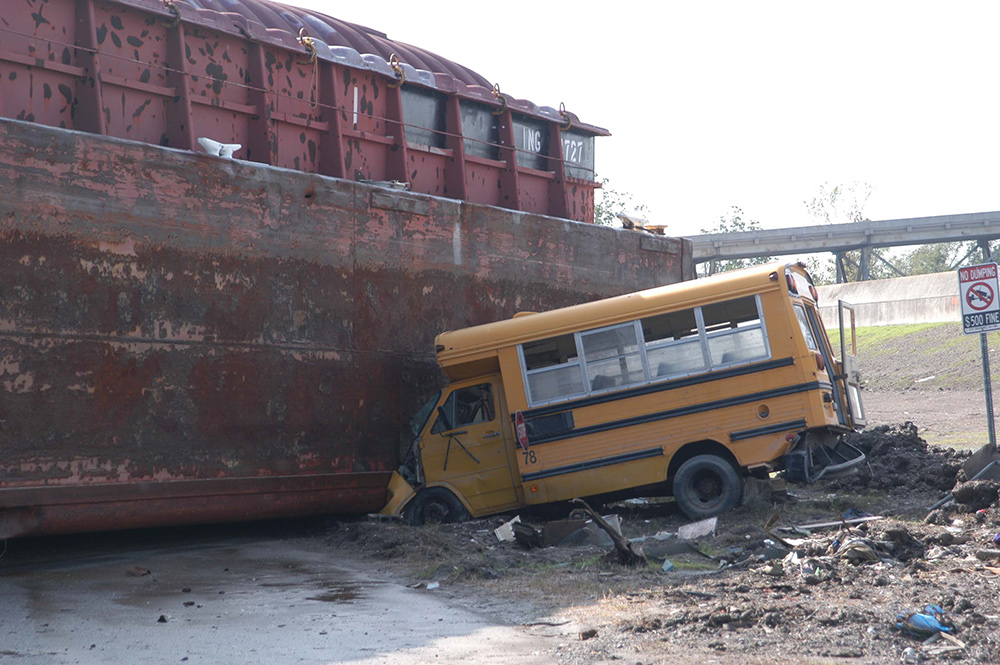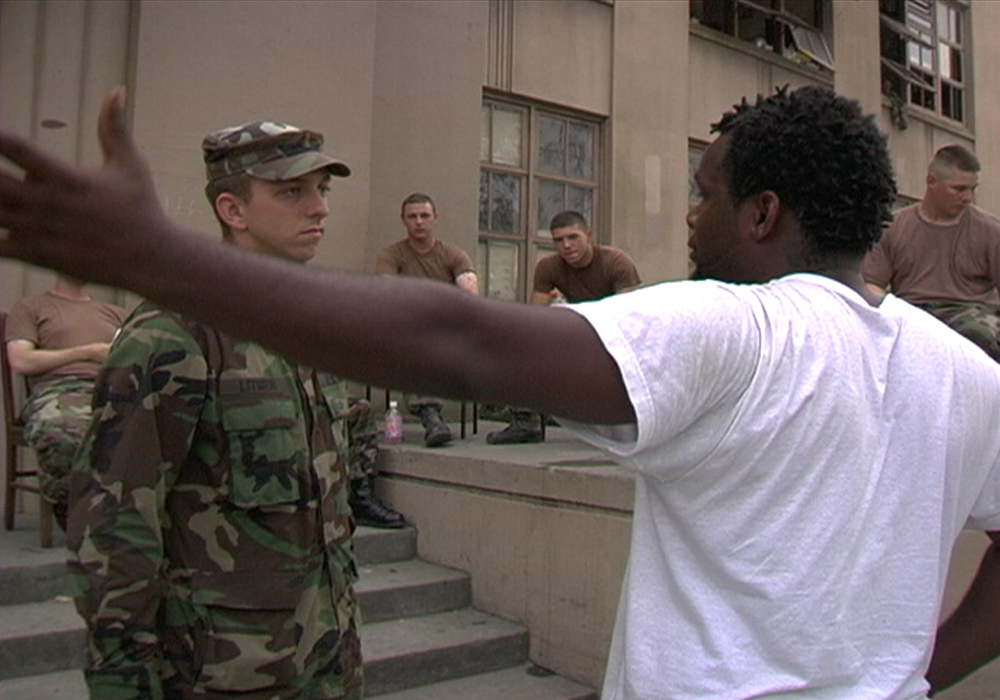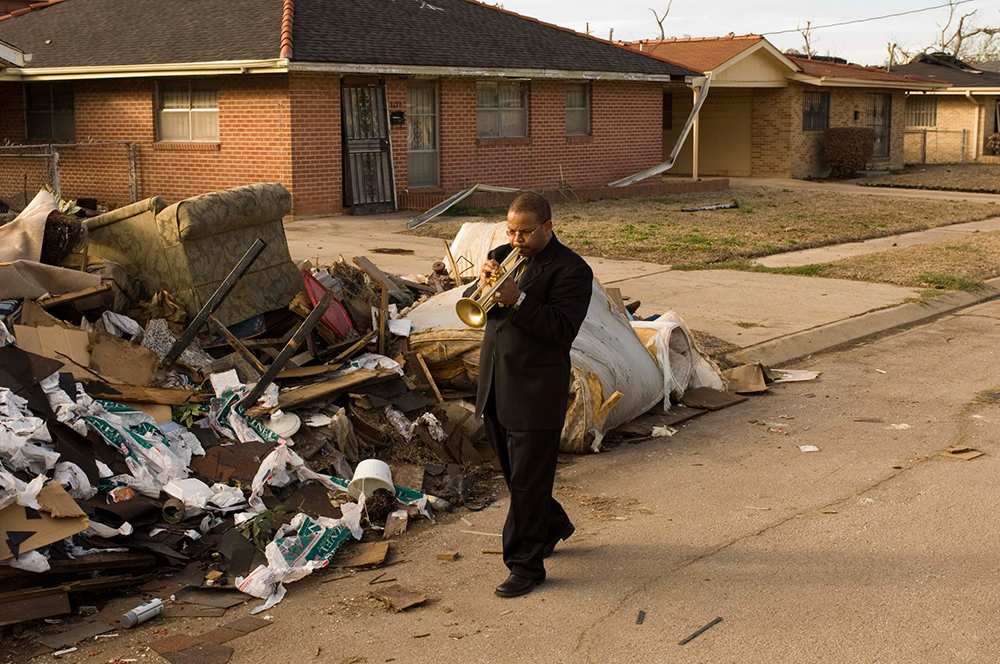
Flood of Images: Media, Memory, and Hurricane Katrina
By Bernie Cook
Published by University of Texas Press, 2015
So much was lost in the rising floodwaters of Hurricane Katrina, but perhaps the greatest sacrifice made by the residents of that afflicted arena was their human dignity. Their nobility as a people was slowly and painfully stolen, not only by the vagaries of nature but by the twists and turns and convoluted interpretations of events as reported on television to the outside world.
What do we, those of us who were not directly affected, actually remember of this catastrophic event? How did the media influence our experience of Katrina? Bernie Cook, a native of New Orleans and associate dean of Georgetown College, Georgetown University, attempts to answer these questions through a detailed analysis of the media reporting before, during and after the storm. This book is a fitting guide through our memories as we look back from the vantage point of the tenth anniversary of the disaster we call Katrina.
In the preface of Flood of Images, the author reminds us of the simple facts of the event: starting on Monday, August 29, 2005 at 6:10 a.m., Hurricane Katrina made landfall at Buras, Louisiana. Although it had diminished from a Category 5 to a Category 3 storm, a 21-foot surge hit the Louisiana coast, with an even larger surge in Mississippi. It was not the storm itself that caused the greatest loss of life and destruction, but the collapse of the levees, starting early, at 4:30 a.m., before the storm hit, that led to the horrific flooding. Ultimately, "Eighty percent of the City of New Orleans flooded due to the failure of the federally constructed and maintained levee system." The last of the floodwaters that had reached over ten feet throughout the city did not drain from the streets till the first week of October. An estimated 1,577 people died in Louisiana, mostly in New Orleans. Months later, badly decomposed bodies were still being found by family members.
Cook devotes the first section of the book to a detailed, chronological, day-by-day, hour-by-hour analysis and comparison of news reports of the storm from three major television networks: CNN, Fox News and NBC. Based on ratings and numbers of viewers, Cook determined that these three outlets were the most significant, registering the greatest impact of all the news networks.

Chapter Two, "Weather Citizens," covers August 28, the Sunday before landfall. The term "weather citizens" was culled from Marita Sturken's earlier writing about media coverage of the El Niño weather phenomenon in California. Both she and Cook subscribe to the idea that television news promotes a sense of connection by producing fear among viewers who are far from harm, and that they can feel pleasure through apprehension. Simply by watching, "weather citizens" fulfill a duty that requires no further action. Stoking fear of the storm, in order to keep eyeballs riveted to their coverage became the networks' main goal in the hours leading up to landfall. Cook makes the connection between audience concerns and the selection of advertisers: Lipitor, Maalox and Ambien reinforced the play between apprehension, anxiety and the products to alleviate stress-induced ailments during this time frame.
Most of the reporting "on the ground" was done from safe and protected distances, but of the three networks, it was the early reporting by CNN's Jeanne Meserve, with footage by Mark Biello, that was the most immediate, empathetic and authoritative. Cook does a thorough job of highlighting their efforts to accurately report what they were experiencing and filming. One of the book's most powerful revelations comes in specifically describing the many instances of disjunction between the images we are seeing and the accompanying voiceover or text crawl, and the shift in reporting the damage to things, material goods and businesses, rather than people.
By Tuesday August 30, the evolving shift—transforming the victims and survivors in New Orleans into looters and criminals—was taking place. On page 49 there is a screen capture from Fox News showing two mothers and their young daughters wading through the floodwaters. They were carrying a few plastic bags that could have held their belongings or food or water, but Fox described these women and small children as "looters" raiding stores. The Fox Report that Tuesday "worked to push images of survivors as criminals looting private property; to excuse the government, the Army Corps, and responders for failing to protect and rescue those in peril; and to blame survivors for their own suffering by selecting sound bites indicating remorse." This started the gradual slide from empathy for the victims to blame, then disenfranchisement through the use of wartime rhetoric, such as "refugees," and finally demonization. The victims of disaster were transformed into an enemy to be feared.
At the end of Part One, Cook clearly declares CNN's superiority in coverage in comparison to the other two networks, but he neutralizes this conclusion by stating, "There were no 'good' and 'bad' television news networks reporting on Katrina and the flooding in New Orleans. There were just networks reporting the news according to their own conventions, editorial perspectives and policies, and the possibilities and limitations of the commercial television apparatus."

Part Two deals primarily with memory and the documentaries made in response to the storm and its aftermath. Cook asserts that while television news formed the basis of our collected memory of Katrina, it was the role of documentary film to "destabilize it by offering contrasting information and interpretation." Spike Lee and Sam Pollard's When the Levees Broke: A Requiem in Four Acts (2006) was the first film after the storm to reach a national audience (funded and broadcast by HBO), and Cook conducts a close reading and analysis. The film also differs from television news, in that it asks viewers to discover their own "truth" by offering multiple voices and multiple perspectives to gain "a more prismatic understanding of events." The assumption is, "If television news created and disseminated false memories, documentary could collect and share authentic memories."
Tia Lessin and Carl Deal's documentary Trouble the Water (2008) is the focus of Chapter 13. By incorporating citizen reporting, the film added significantly to the historical record of Katrina. Other documentary films are discussed, such as Faubourg Treme: The Untold Story of Black New Orleans (2009) by New Orleans natives Lolis Elie and Dawn Logsdon. Elie became a story consultant and eventually a writer for the well-received New Orleans-based HBO series, Treme (2010-2013).
By some accounts New Orleans has recovered and is the best city in the nation for people looking for jobs in creative fields. It was and amazingly still is a city of artists, musicians, storytellers and dancers. To quote author Walter Mosley, "Its architecture is like the miles-long fresco of a big party that will never end. Street paintings everywhere celebrate the color and creed of creativity if not creation. Since Katrina, New Orleans feels even more vibrant, even more alive. And this too is a testament to a people who are victorious in their survival; people who are not only the grist for the story but who are telling it, living it, sharing it, a living literature."
But in the final chapters of Flood of Images, Cook investigates how fiction blends with truth-telling in David Simon and Eric Overmyer's television drama Treme. In these stories shaped about New Orleans post-Katrina, the author reminds us of the dangers of relying on culture alone to sustain the life of a place: "Culture helps New Orleanians survive and provides them with strength, but an overinvestment in culture as solution can reduce commitment to policy work, to action, and to systemic change."
Cynthia Close is the former president of Documentary Educational Resources. She currently resides in Burlington, Vermont, where she consults on the business of film and serves on the advisory board of the Vermont International Film Festival.
